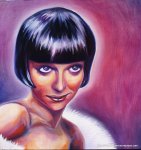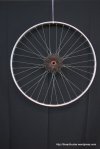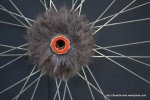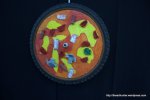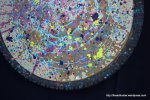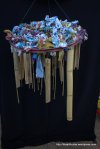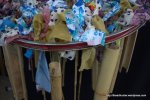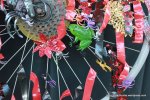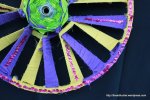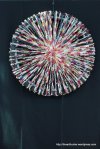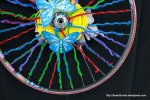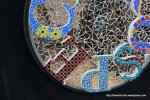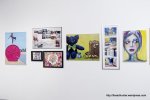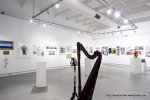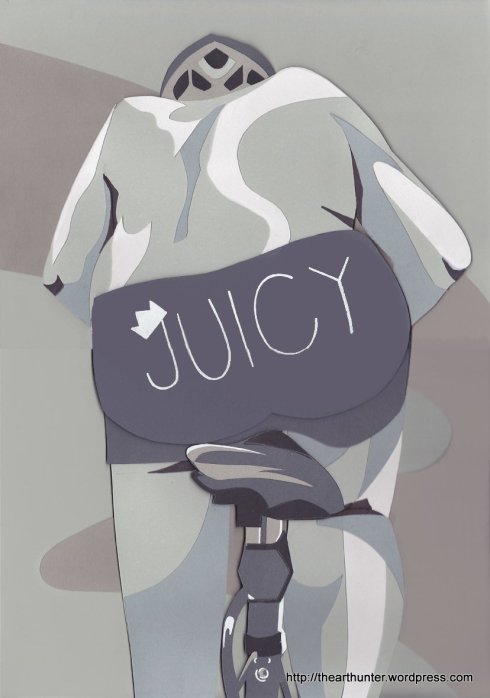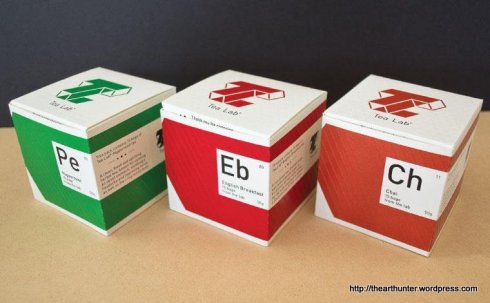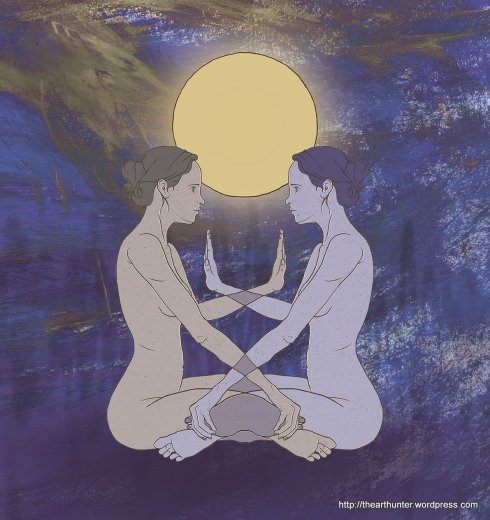I was lucky enough to attend the opening of Ruby Chew’s latest exhibition “Spitting Image” at Hill Smith Gallery on Wednesday night. I have heard a lot of good things about this new up and coming artist who is an honours graduate from the Adelaide Central School of Art. She also exhibited at the Helpmann Academy exhibition in 2011; and this was where I was first able to view her work.
Spitting image is flooded with colour; Ruby’s portraits are bold and full of life. They step out of the canvas and greet you, and at the same time invite you in for a closer look.

“Scott” 2012, is a portrait of a young Blond-haired man with a short moustache. He is shown bare-chested on a turquoise background with a red glitter circle behind his head. His arms are covered with tattoos; depicting what looks to be the Japanese Imperial Palace in Tokyo painted in a traditional Sumi-e style. It is from this tattoo that the turquoise colour has been lifted to serve as the matt background. Scott is shown on an angle to the viewer, not quite three-quarter. The composition is formal; the solid red glitter ring accentuates the facial features and directs the eye over the painted arms and about the bright cherry red beads. The tonal qualities of the skin have been painted with great adherence to detail.
There is an element of contrast in the work; the soft tones of the skin in comparison to the matt tones of the background enhance the flesh. While red circular shapes are repeated.
In Ruby Chew’s work there is a certain air of vulnerability and honesty. She shows her subject gently holding an object typically associated with femininity. The circle in the background is a halo and gives us an insight into the man. His eyes stare quietly out at us; his facial features are soft and thoughtful. Beads are often symbols of prayer. What is Scott praying for? As he holds these beads in his open hands he also reveals that he is open for a response.

Jude is a portrait of a young woman; her face has been painted with red paint. Four dots garnish each of her eyes. In the middle of her forehead is an inverted triangle. She is bare shouldered wearing a pink and red dress; painted with flat colour it stands out in comparison with her skin. In the background Ruby has placed another red triangle on a maroon background. This triangle points up, in contrast to the one on Jude’s forehead, extending almost to the top of the canvas.
She is a beautiful woman, with flashing green eyes that stare out as she stands in an angled pose. The look she gives us seems to be one of tentative curiosity. Her eyes contrast strongly with the red of her body paint, attracting our gaze to them.
The red triangle is symbolic of many things, though in this case it could be viewed as a symbol for fire. The fire in her eyes and in her features has been captured with bold confidence. Again there is simple honesty in this work that entrances us. It directs us to want to know more. What is this fire that is apparent in “Jude”? In what way does it drive her? These questions are not so easily answered by staring at this work though we continue to do so.
Ruby Chew in this exhibition has painted, “painted” people. Many of her subjects have been decorated with tattoos, piercings jewellery. Normally such things are signs of people how have a rough exterior; however in Ruby’s subjects we see a gentle, honest human side. She opens up her subject in the painting to expose them in a truly beautiful way. The exhibition is open until the 24th of November.
http://rubychewart.blogspot.com.au
http://www.hillsmithgallery.com.au/



